Vegetables That Boost Your Immune System
Jubaer Hussain
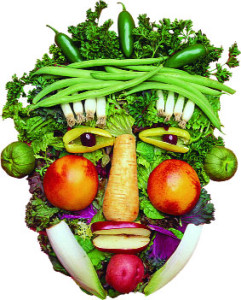 Cruciferous Vegetables
Cruciferous Vegetables
Cruciferous vegetables are the gold standard in immune-boosting vegetables. They are a group of vegetables that are rich in fiber, vitamin C, and folate. Some of the vegetables in this class are also good sources of calcium, beta-carotene, and vitamin B6.
Fiber is an important nutrient for weight loss and maintenance because it keeps you feeling full and helps control your hunger. Fiber can also lower cholesterol and blood pressure, and help to temper blood sugars by slowing the absorption of carbohydrates into your bloodstream after meals. This lowers your risk of cardiovascular disease and type 2 diabetes
Antioxidants in cruciferous vegetables like vitamin C may reduce your risk of cataracts and macular degeneration. Vitamin C helps the body make collagen, too; collagen is a major component of cartilage that aids in joint flexibility, may reduce your risk of arthritis and keeps your skin and hair healthy and beautiful.
B vitamins like folate and B6 may help reduce your risk of cardiovascular disease and prevent memory loss. Your scalp, hair follicles, and growing hair also benefit from these two B vitamins.
Cruciferous vegetables that contain calcium, such as broccoli and kale, may be able to help lower blood pressure and alleviate PMS cramping.
Cruciferous vegetables that contain beta-carotene, such as cabbage, contribute to the growth and repair of the body’s tissues. Beta-carotene may also protect your skin against sun damage. Beta-carotene is converted to vitamin A in the body, and food sources of beta-carotene are the best way to get your vitamin A, since extremely high doses of vitamin A in supplements can be toxic and lead to bone, liver, and neural disorders as well as birth defects.
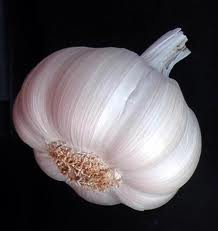 Garlic
Garlic
Garlic is surely one of the world’s most potent medicines, and its potent smell is what makes it so powerful. This miracle herb Garlic has been used since time immemorial as a medicine to prevent or treat various diseases and conditions.
Garlic has a variety of potent sulphur-containing compounds which are the reason for its characteristic pungent odour. Allicin, the vital compound among them, is known to have great anti-bacterial, anti-viral, anti-fungal and anti-oxidant properties. The benefits of allicin can be best garnered when it’s finely chopped, minced or pureed and let sit for some time. Garlic is also a reliable source of selenium. Allicin, along with other compounds like ajoene, alliin, etc. found in them also have an effect on the circulatory, digestive and immunological systems of our body and help in lowering blood pressure, detoxification, healing, etc.
 Onions
Onions
Onions are rich in quercetin, a powerful antioxidant that may reduce the risk of cancer. The onion has been used as an ingredient in various dishes for thousands of years by many cultures around the world. Onions have a variety of medicinal effects. Early American settlers used wild onions to treat colds, coughs, and asthma, and to repel insects. In Chinese medicine, onions have been used to treat angina, coughs, bacterial infections, and breathing problems.
The World Health Organization (WHO) supports the use of onions for the treatment of poor appetite and to prevent atherosclerosis. In addition, onion extracts are recognized by WHO for providing relief in the treatment of coughs and colds, asthma and bronchitis. Onions are known to decrease bronchial spasms. An onion extract was found to decrease allergy-induced bronchial constriction in asthma patients.
Onions are a very rich source of fructo-oligosaccharides. These oligomers stimulate the growth of healthy bifidobacteria and suppress the growth of potentially harmful bacteria in the colon. In addition, they can reduce the risk of tumors developing in the colon. Onion may be a useful herb for the prevention of cardiovascular disease, especially since they diminish the risk of blood clots. Onion also protects against stomach and other cancers, as well as protecting against certain infections. Onion can improve lung function, especially in asthmatics.
 Mushrooms
Mushrooms
The power of mushrooms comes from their ability to enhance the activity of natural killer T cells (NKT).
Mushrooms are a low-calorie food usually eaten cooked or raw and as garnish to a meal. Dietary mushrooms are a good source of B vitamins, such as riboflavin, niacin and pantothenic acid, and the essential minerals, selenium, copper and potassium. Fat, carbohydrate and calorie content are low, with absence of vitamin C and sodium. There are approximately 20 calories in an ounce of mushrooms.
 Tomatoes
Tomatoes
Tomatoes are also the richest source of the exceptionally potent antioxidant lycopene, a substance that prevents cancer, particularly cancer of the prostate.
Tomato consumption has been associated with decreased risk of breast cancer, head and neck cancers and might be strongly protective against neurodegenerative diseases. Tomatoes, tomato sauces and puree are said to help lower urinary tract symptoms (BPH) and may have anticancer properties. Tomato consumption might be beneficial for reducing cardiovascular risk associated with type 2 diabetes.
Beets
Beets are an amazing blood purifier. You probably rarely think about beets. Not only are beets a great boost to your physical well being and a wonderful source of iron, it has been shown to be an immunity booster and guard against cancer. Additionally just as one learns to appreciate and discover and acquire tastes for various wines or cheeses, beets are one of those overlooked vegetables that once you realize all it beholds, you will cultivate a new appreciation and yes, maybe even love for them! Personally, I have always loved beets and often eat them chilled. Sliced beets in a can not only involve no cooking, they are naturally sweet and refreshing, are low calorie.Beets have ZERO trans fat and ZERO saturated fat.Beets contain folic acid which is necessary for the production and maintenance of new cells.
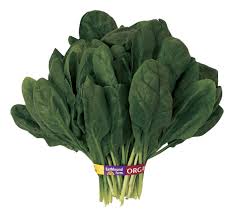 Spinach
Spinach
Spinach is rich in beta carotene, which the body transforms into vitamin A, triggering your immune response to keep you well.
Spinach has a high nutritional value and is extremely rich in antioxidants, especially when fresh, steamed, or quickly boiled. It is a rich source of vitamin A (and especially high in lutein), vitamin C, vitamin E, vitamin K, magnesium, manganese, folate, betaine, iron, vitamin B2, calcium, potassium, vitamin B6, folic acid, copper, protein, phosphorus, zinc, niacin, selenium and omega-3 fatty acids. Recently, opioid peptides called rubiscolins have also been found in spinach.
Polyglutamyl folate (vitamin B9 or folic acid) is a vital constituent of cells, and spinach is a good source of folic acid. Boiling spinach can more than halve the level of folate left in the spinach, but microwaving does not affect folate content.
Asparagus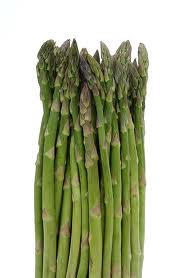
Asparagus’s biggest talent is its ability to encourage the body to flush out toxins, due to its natural diuretic abilities.
Asparagus is a very good source of fiber, folate, vitamins A, C, E and K, as well as chromium, a trace mineral that enhances the ability of insulin to transport glucose from the bloodstream into cells.
This herbaceous plant—along with avocado, kale and Brussels sprouts—is a particularly rich source of glutathione, a detoxifying compound that helps break down carcinogens and other harmful compounds like free radicals. This is why eating asparagus may help protect against and fight certain forms of cancer, such as bone, breast, colon, larynx and lung cancers.
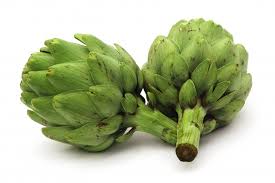 Artichoke
Artichoke
Artichoke supports the liver. The naturally occurring variant of the artichoke, the cardoon (Cynara cardunculus), which is native to the Mediterranean area, has records of use as a food among the ancient Greeks and Romans.improvement in the cultivated form appears to have taken place in the medieval period in Muslim Spain and the Maghreb, although the evidence is inferential only. Names for the artichoke in many European languages today come from medieval Arabic al-khursh?f via late medieval Spain. The total antioxidant capacity of artichoke flower heads is one of the highest reported for vegetables. Cynarine is a chemical constituent in Cynara. The majority of the cynarine found in artichoke is located in the pulp of the leaves, though dried leaves and stems of artichoke also contain it.
Red bell pepper
Red bell pepper is bursting with vitamin C, making it a powerful immune builder. Capsicum peppers are rich sources of antioxidants and vitamin C. Compared to green peppers, red peppers have more vitamins and nutrients and contain the antioxidant lycopene. The level of carotene, like lycopene, is nine times higher in red peppers. Red peppers have twice the vitamin C content of green peppers. Red and green bell peppers are high in para-coumaric acid
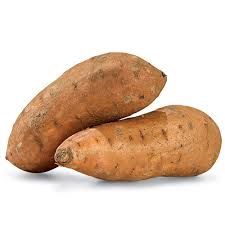 Sweet potatoes
Sweet potatoes
Sweet potatoes are far superior than the run-of-the-mill white potato.
sweet potatoes are rich in complex carbohydrates, dietary fiber, beta-carotene (a provitamin A carotenoid), vitamin C, vitamin B6, manganese and potassium. Pink, yellow and green varieties are also high in beta-carotene.












Recent Comments